Jacksonville Terminal
Introduction
Text-to-speech Audio
Images
The Jacksonville Terminal, completed in 1919.
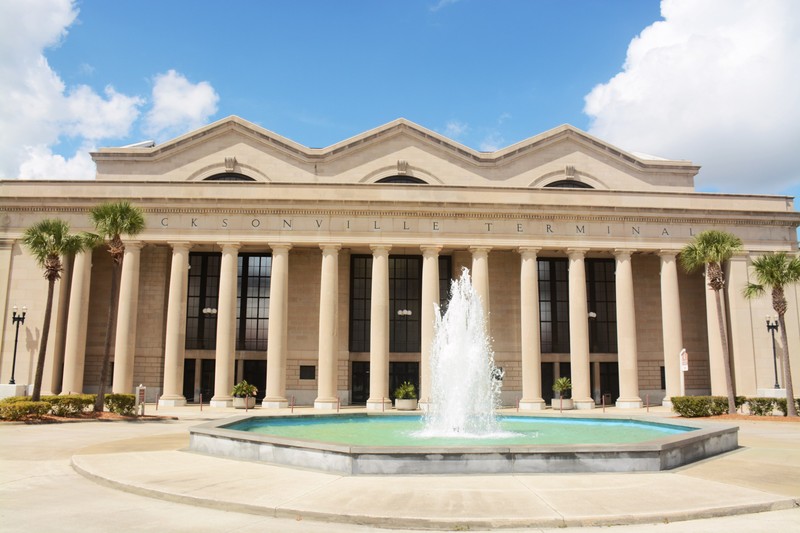
The Jacksonville Terminal, completed in 1919.
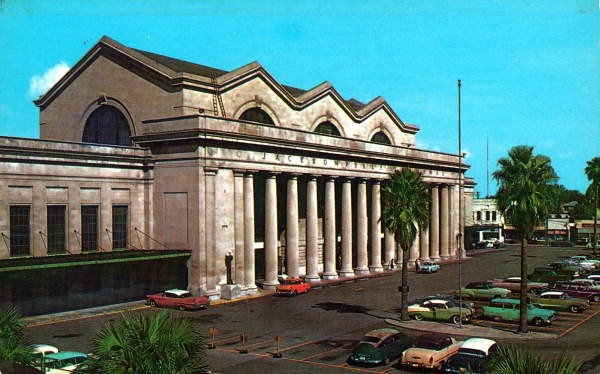
A scene from 1926.
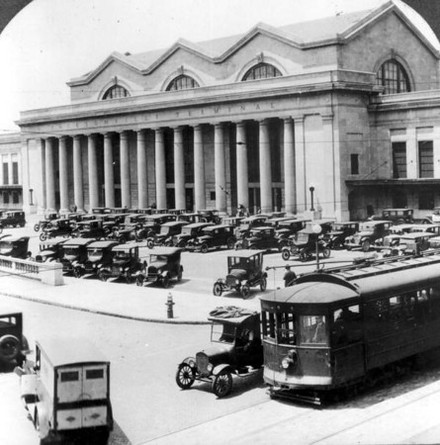
An aerial of the terminal and Railroad Row district during the 1920s.
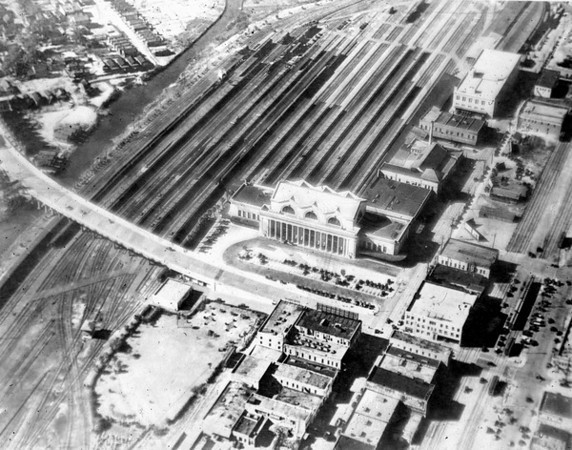
The concourse in 1921.
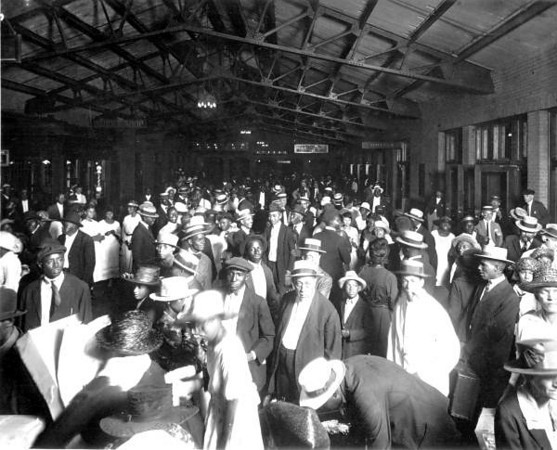
The concourse in 1921.
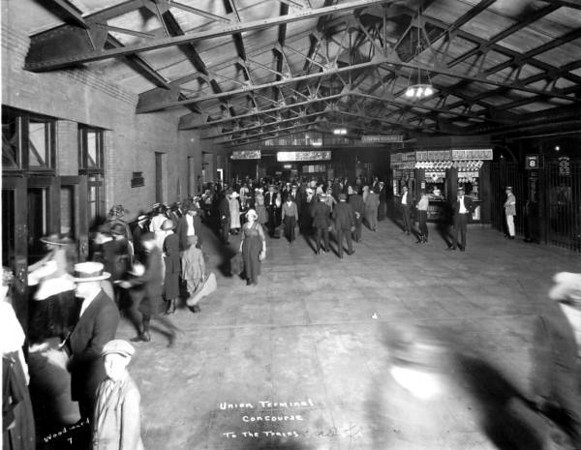
The concourse in 1921.
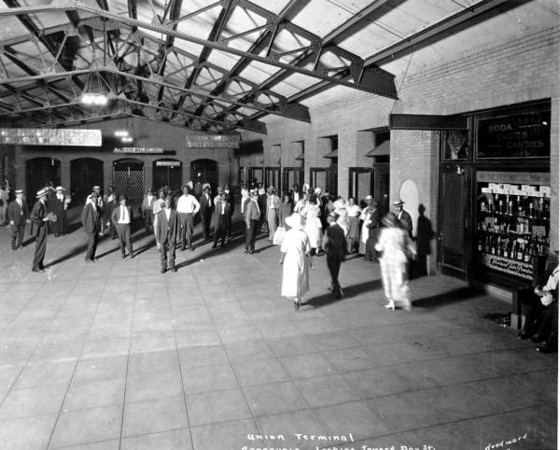
The Black waiting room in 1921.
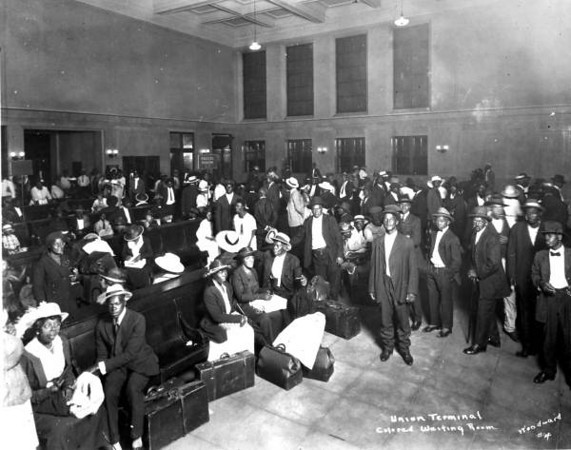
The main waiting room in 1921.
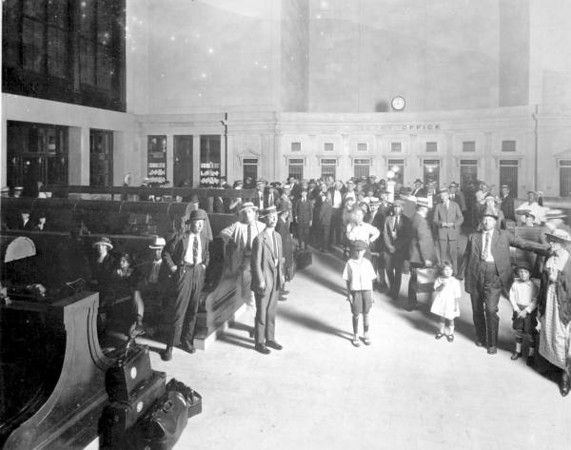
Thomas Edison coming into Jacksonville.
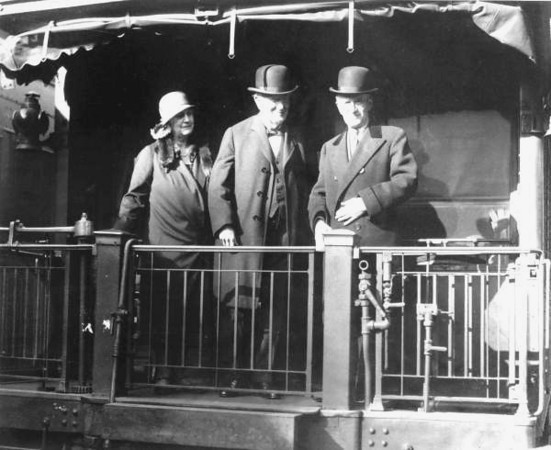
The terminal's yard in the 1920s.
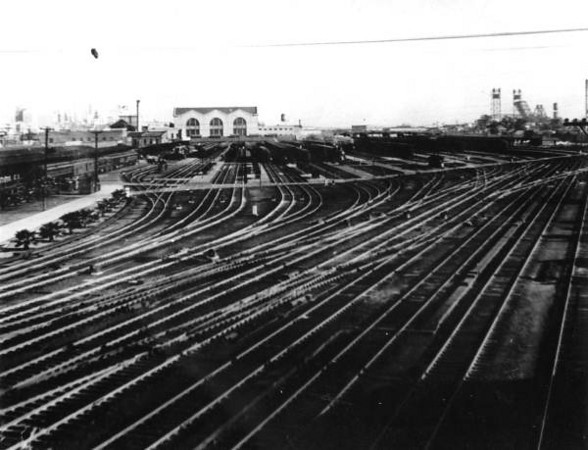
Feb. 2, 1939 and the Jacksonville public is getting their first look at a new technology, the Diesel Streamliner. In this scene the Seaboard Air Line debuts the Silver Meteor with lightweight stainless steel cars.
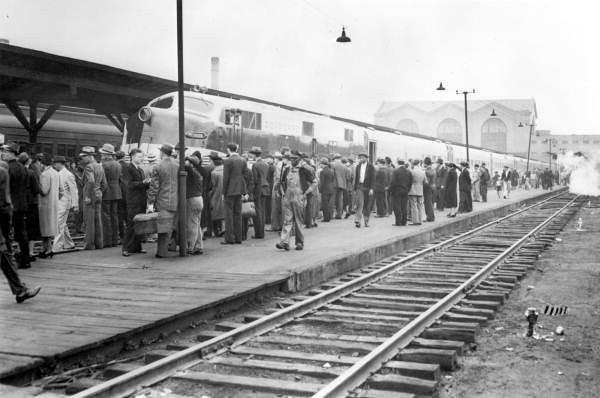
Franklin D. Roosevelt coming into Jacksonville in 1943.
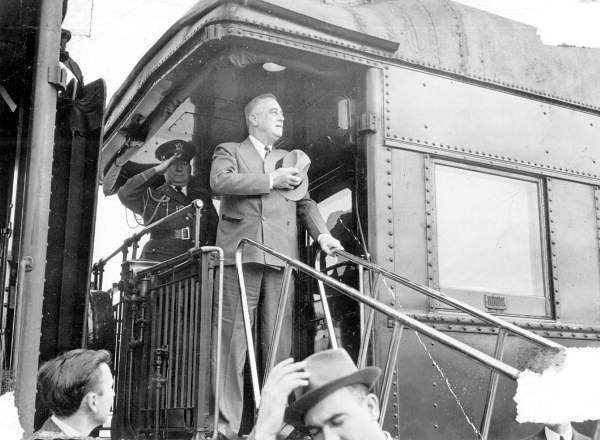
The front of the terminal and the Lee Street Viaduct in 1946.
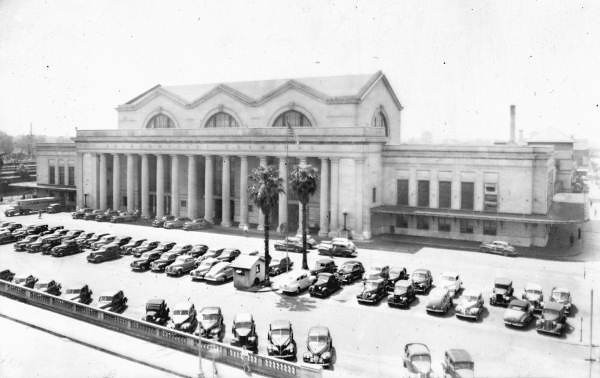
Backstory and Context
Text-to-speech Audio
On November 17, 1919 the Jacksonville Terminal replaced an older terminal in Jacksonville, Florida, which accommodated the five major railroads serving the city, and remained the largest railroad station in the Southeast until its closing in 1974. In 1893, Henry Flagler organized the Jacksonville Terminal Company (JTC) and built the original Union Depot. The JTC was officially incorporated on April 7, 1894, and the depot opened the following year on February 4, 1895. By 1912, at least 92 trains per day were passing through the station, requiring a larger station to be constructed. Planning began immediately, and in 1915, New York architect Kenneth Mackensie Murchison won a nationwide competition to design the new terminal. In 1919, construction was complete, and the Jacksonville Terminal opened.
The nearby McCoys Creek had to be re-channeled for the large project, during which 2,000 piling were driven into the ground to create a 180-foot façade of 14 Doric columns, mimicking New York City’s Pennsylvania Station. The new terminal consisted of 40.727 miles of railroad tracks, as well as a union passenger depot, engine terminal, passenger and freight yards, and a restaurant. Additionally, it contained a 75-foot barrel vaulted ceiling above the main waiting room, as well as a Black waiting room during the time of segregation with a more detailed ceiling. Upon completion, around 142 trains and 20,000 passengers saw the station each day. Shortly after its opening, the “Florida Boom” created even more traffic, and more tracks had to be added. The Jacksonville Terminal ended up with 14 stub and 11 through passenger tracks with butterfly covered platforms, as well as two tracks for through freight trains. A subway with ramps was required to reach the outer or through tracks.
During the Great Depression, the “New Town” area of additional tracks was closed off, but reopened during World War II when around 100,000 servicemen and civilians made their way to Jacksonville Terminal daily. The five major rail companies controlling the JTC were the Atlantic Coast Line Railroad Company, Florida East Coast Railway Company, Seaboard Air Line Railway Company, Southern Railway Company, and Georgia Southern Florida Railway Company. February 2, 1939 was the Seaboard Air Line’s debut of new Diesel Streamliner technology with the Silver Meteor, which had lightweight, stainless steel cars and is now one of just two surviving trains to Florida under Amtrak. On December 19, 1940 the Florida East Coast Railway Company made similar strides with its first run of the “pocket streamliner” The Henry M. Flagler, which was a contribution to a new family of trains that each had a unique route to Chicago.
In the early 60s, renovations were made to the terminal. They consisted of wooden platforms being replaced by concrete, shed roofs receiving metal covers, freight tracks were dug deeper to accommodate higher railcars, and a lower ceiling was installed to conceal an attempt to add floors above the waiting room. However, by 1963, the companies controlling the JTC began to stop service for various reasons. That year, the Florida East Coast Railway Company was the first to cease service due to the breakout of a strike. In 1964, the Southern Railway Company followed suit, and by July 1968, the last Florida East Coast train made its trip out of the Jacksonville Terminal.
By 1971, Amtrak only had four trains operating in both directions at the terminal. The following year, another restoration was completed by William Morgan. However, on January 3, 1974, the Floridian, the last passenger train, left the Jacksonville Terminal, closing its doors for good after it suffered from decreased rail travel in conjunction with higher modern maintenance costs. From 1982-1985 a restoration was completed once more, this time to convert the terminal into what it operates as today, the Prime F. Osborn III Convention Center. With 78,000 square feet of exhibit space and 22 meeting rooms, it remains the only southern railroad station in the nation to be converted into a state-of-the-art convention center. In 1976, the building was listed on the National Register of Historic Places for its time as the largest terminal in the Southeast.
Sources
- Downtown Jacksonville Historic Building Self-Guided Tour, Amazon AWS. Accessed October 30th 2020. http://s3.amazonaws.com/visitjax-2018/craft-images/CVB18-025315-HistoricBuildingWalkingTour_SINGLES_NoBleed_m2.pdf.
- Jacksonville Terminal, Jacksonville, Florida, University of Southern Florida. Accessed October 30th 2020. https://fcit.usf.edu/florida/photos/cities/jax/jax1/jax126.htm.
- Lost Jacksonville: Union Terminal, Metro Jacksonville. January 8th 2010. Accessed October 30th 2020. https://www.metrojacksonville.com/article/2010-jan-lost-jacksonville-union-terminal.
- About Us, Jacksonville Terminal Company, LLC. Accessed October 30th 2020. https://jtcmodeltrains.com/pages/about-us.
- History of Jacksonville Terminal, Jacksonville Terminal. Accessed October 30th 2020. http://www.jacksonvilleterminal.com/history.htm.
- Vintage Photos: Jacksonville Terminal train station, The Florida-Times Union. November 15th 2019. Accessed October 30th 2020. https://www.jacksonville.com/photogallery/LK/20191115/PHOTOGALLERY/111509990/PH/1.
- November Program: Jacksonville Terminal Centennial Tribute, Jacksonville Historical Society. Accessed October 30th 2020. https://www.jaxhistory.org/jacksonville-terminal-centennial-celebration/.
https://thecoastal.com/flashback/history-lavilla-neighborhood/
https://www.metrojacksonville.com/article/2010-jan-lost-jacksonville-union-terminal
https://www.metrojacksonville.com/article/2010-jan-lost-jacksonville-union-terminal
https://www.metrojacksonville.com/article/2010-jan-lost-jacksonville-union-terminal
https://www.metrojacksonville.com/article/2010-jan-lost-jacksonville-union-terminal
https://www.metrojacksonville.com/article/2010-jan-lost-jacksonville-union-terminal
https://www.metrojacksonville.com/article/2010-jan-lost-jacksonville-union-terminal
https://www.metrojacksonville.com/article/2010-jan-lost-jacksonville-union-terminal
https://www.metrojacksonville.com/article/2010-jan-lost-jacksonville-union-terminal
https://www.metrojacksonville.com/article/2010-jan-lost-jacksonville-union-terminal
https://www.metrojacksonville.com/article/2010-jan-lost-jacksonville-union-terminal
https://www.metrojacksonville.com/article/2010-jan-lost-jacksonville-union-terminal
https://www.metrojacksonville.com/article/2010-jan-lost-jacksonville-union-terminal
https://www.metrojacksonville.com/article/2010-jan-lost-jacksonville-union-terminal
